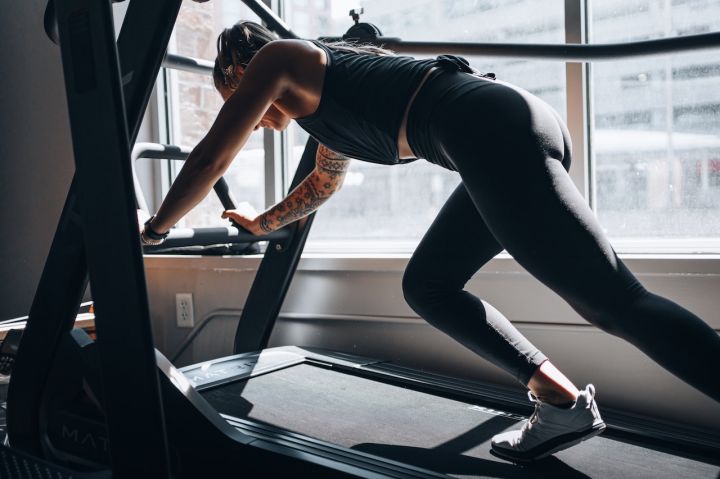Sculpt Your Buttocks, The Hip Thrust May Be a More Efficient Movement Than The Squat
Your gluteus maximus is the largest and most powerful muscle in your body and how to train your gluteus muscles on fixed equipment. Today we'll focus on the relationship between the two most common movements in free weight training and gluteus maximus training.

While you may think that the deep squat is enough to work the gluteus maximus, there is another movement that you should try even more - the hip thrust. It appears to do the same thing as the deep squat on the surface, but the increased isolation stimulation of the gluteus maximus and injury reduction aspects give the hip thrust more advantages as a movement.


Of course, one cannot generalise by saying that the hip thrust is better than the deep squat sit. The most important thing is which muscle you are targeting. The generalisation that "The hip thrust is a more effective exercise" Makes it seem a bit too simple (actual research is usually more complex than this). But if you want to work the gluteus maximus and improve your forward hip movement, the hip thrust should be the better choice.
Scientific analysis of hip thrusts and squats
Choosing the hip thrust is more than just knowing how to do the movement; i have to sweat it out to determine its scientific validity. In the one project study, researchers subjected participants to six weeks of resistance training, including hip thrusts and deep squats.

What were the results? Both exercises maximised their function, with vertical hip extensions being more beneficial for improving vertical jumping ability, and horizontal hip extensions being more beneficial for improving sprinting and horizontal jumping ability. If the goal is quadriceps growth, deep squats would be a better choice. If the goal is growth of the gluteus maximus then hip thrusts would be a better choice.

Another study that looked at the effects of 7 weeks of hip thrust and deep squat training on young female soccer players. The researchers also found that the group that did hip thrusts gained better sprint performance.

The prevalence of injuries, particularly to the knees and lower back, was also another selection factor for the deep squat. A study in the journal of orthopaedic sports medicine found that the deep squat was one of the leading causes of injury during powerlifting.

The amount of stress placed on the spine during a deep squat increases the risk of injury. This is why the deep squat is one of the two most injury-prone movements in the gym, the other being the hard pull.

How to do hip thrusts (the right way)
If you don't perform hip thrusts correctly, doing more reps won't do you any good. To help you avoid injury and get the most out of this movement, let's break down the correct way to do a hip thrust. All you need is a weight bench and barbell.


The height of the bench may vary (sometimes other equipment is used instead), using a lower bench means you will tap the barbell to the ground after completing the movement, while a higher bench means you will add flips in mid-air. Next, keep your body perpendicular to the bench, with your upper back and shoulders resting on the bench and your body forming a bridge.


Your standing position will vary depending on your hip structure, narrow, medium and wide are all acceptable. But the feet are usually pointing forward. Be sure to use the same range of motion and stretch your hips with each repetition."
Adjust your body so that the bottoms of your shoulder blades are in contact with the bench and that they should remain stationary and not slide up and down on the bench.
The head will also be positioned forward throughout the movement, so that at the end of the movement your head and neck are essentially neutral, but at the top of the movement your neck will be bent. This is important because it prevents hyperextension (overarching) of the spine from occurring."

To start the initiation, your upper body should remain still and all movements will start from your sternum so that your upper body does not rotate or bend around the bench.
Raise your hips by squeezing your heels. Your feet should remain fixed at the top of the movement and if you have proper alignment your shins will be vertical. You can use your gluteus maximus to stretch your hips, raise the barbell and tilt your pelvis back at the top of the movement.

For difficulty options, try it with your own weight first, then do a single leg exercise or add a resistance band or barbell. Or, more challenging, pause at the top for three to five seconds.


Avoid common mistakes

Many of the most common mistakes include incorrect posture and positioning. For example, if you choose a weight that is too heavy, you will not achieve full hip extension, resulting in hyperextension of the spine.
Some of the more common mistakes include over-bending at the waist, over-bending or extending the neck, and not keeping the feet stable. Improper bench height can also adversely affect training results.

Hip thrusts in relation to the deep squat

There is much more to training the gluteal muscles than meets the eye. The biggest debate between the hip thrust and the deep squat is all about choosing the right movement for your training goals and a well-rounded approach to training the gluteus muscles.
Hip muscle training can improve your strength and technique in the deep squat and hard pull, in addition to improving your sprinting, jumping, agility and rotation. In addition, strong gluteus maximus and proper technique will reduce the likelihood of lower back, knee and hip injuries.

